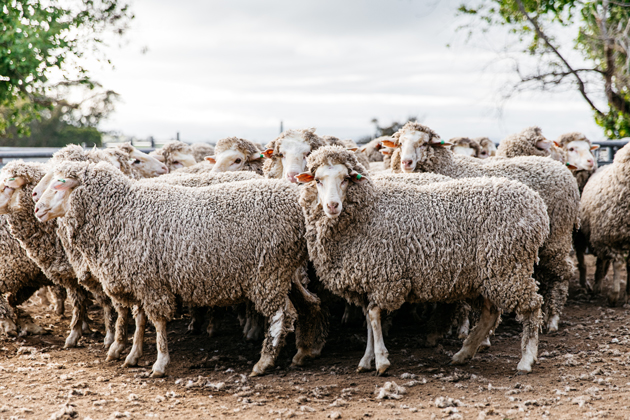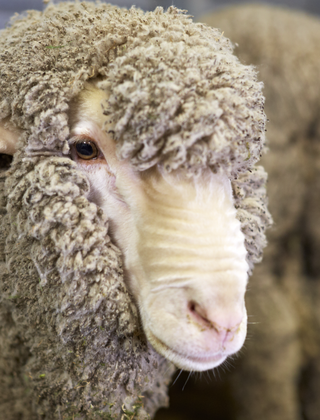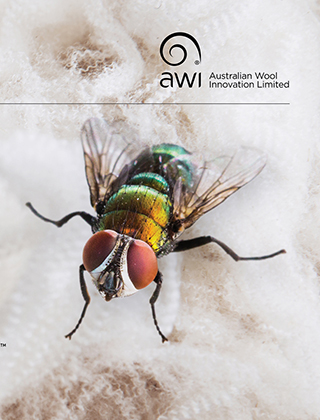Next gen solution for lice-free sheep

Flexolt® (10 g/L fluralaner) is the first of its chemical ‘family’ (isoxazolines) to be registered by the Australian Pesticides and Veterinary Medicines Authority (APVMA) for lice control in sheep. This means that it is completely different from anything else on the market and so there should be no resistance to it, including from lice that are resistant to existing products (eg synthetic pyrethroids). Responsible use will help prevent resistance and keep it useful into the future.
Fluralaner is given as an oral drench and has its effect from the inside out – it works quickly, is not affected by wool length or weather, and does not leave detectable residue in the fleece. This means a zero-day wool handling interval but also that your sheep do not have long-term protection in the fleece:
- You must treat the whole flock at the same time – any lice lurking alive in the fleece of untreated animals will re-infest the treated ones.
- It is also very important to work on your strong farm biosecurity measures – prevent straying, treat/quarantine any introduced sheep, clean up wool from the shearing shed, ensure contractors have clean clothes and moccasins, etc.
Treating all sheep and preventing louse reintroduction via good farm biosecurity will together result in effective lice control.
The new fluralaner product’s current claim is against Bovicola ovis, the common sheep body louse. Effect against other external parasites is not known. However, the product is very new, and so this and other advice in this article may change over time. If you have further questions, it is best to contact the manufacturer.
FREQUENTLY ASKED QUESTIONS
To kickstart your journey and ensure a seamless understanding of the new treatment, ParaBoss has compiled a list of frequently asked questions.
Everyone said there’d never be a drench for lice and now there is. Why were they wrong?
For an oral drench to kill external parasites, it needs to get from the gut into the blood. Lice don’t feed on blood, so it was believed that an oral drench could not work.
However, unexpectedly but happily, fluralaner can take one step further from the blood into oil/sweat glands (therefore onto the fleece fibres), and this is enough to kill lice while not being harmful to humans who are handling the animal or fleece.
Do I need to treat the whole mob?
The whole flock must be treated at the same time. It will kill lice and eggs within 7-43 days. Be aware that it can take up to 6 months for a lice burden to become obvious; so taking a chance by not treating some of the flock will allow any lice lurking on untreated sheep to re-infest the treated ones, wasting your time and money.
Prevention of re-infestation depends on good biosecurity.
It’s been very wet lately, can I use fluralaner?
Damp increases the risk of dermo when dipping, and rainfall may wash off a topical product. So if you need to treat in wet weather, fluralaner (working from inside the body) is a good option. Its effect is not changed by rainfall.
Shearing is a long way off / I can’t get a shearing team booked in / I’m not planning to shear the whole flock at once
Fluralaner is effective regardless of wool length, plus it has a zero-day wool harvesting interval. So if you are struggling to get a shearing contractor and your sheep are lousy, or you’re split-shearing, it could be a good choice – but make sure that you treat all animals.
I think I missed dosing that scrub wether
Please catch and dose that animal again if you’re not sure – a possible double-dose is much less risky than leaving a sheep untreated, which would allow their lice to survive and reinfest the whole mob, wasting all your time and money. Fluralaner is safe at up to 5x the label dose.
It’s advised to put a coloured mark on each dosed animal so you can have confidence on who’s been treated.
How do I plan for joining/pregnancy/lambing?
It’s advised not to treat ewes less than 4 weeks before lambing starts. This is simply to make sure all the lice and eggs on the ewes are dead, so cannot infest the newborn lambs.
If you don’t want to treat >4 weeks before lambing, wait until all ewes have lambed – fluralaner can be given safely to lambs >6 kg body weight.
It is also safe in breeding rams. So it’s best to treat the whole flock either before joining, >4 weeks before lambing, or once lambing has finished. While rams are in with the ewes just leave them to their business.
What about my dairy sheep?
Do NOT use fluralaner if milk from your ewes will ever in this or future lactations be used for human consumption.
I’ve got new sheep arriving
In general, treating the whole flock at once is strongly recommended – a single louse-infested sheep can re-introduce lice to your whole flock.
If you really do need to treat in quarantine, ensure the new sheep are dosed correctly and kept in strict biosecurity quarantine for 4 weeks, to ensure complete kill of lice and eggs.
My sheep need a second treatment
Do NOT re-treat in less than 54 days. If all sheep are dosed correctly, and biosecurity is good, the lice will be effectively controlled.
If you plan a second treatment within a year, it is good practice to use a different product containing a completely different active chemical to reduce reliance on a single active ingredient.
When can I send animals to slaughter / for export?
At the time of writing, the meat withhold period (WHP) is 14 days.
Export slaughter interval (ESI) is currently 54 days; however, it is advised to confirm this with the manufacturer or APVMA before use if you intend to export meat from any animals.
I’m planning to drench for worms at the same time
Unfortunately, we don’t have any information at the time of writing regarding any possible changes to safety or effectiveness if fluralaner is given along with other drenches, so if you’re planning to do this we advise contacting the manufacturer.
It is fine to give vaccines at the same time as fluralaner.
I have alpacas/llamas/goats as well
Fluralaner has not been studied for its effect, dose, safety, or residues in these species – it is NOT recommended to use in any animal other than sheep.
I have some shedding sheep. Can I use fluralaner for them?
Yes, fluralaner is registered for use in all breeds of sheep.
I’m worried about the safety of a new drug
Some sheep may cough after treatment, but this is reported to be of no concern. No other adverse effects have been reported in sheep, and it is safe at up to 5x the label dose.
Refer to the label for human safety, what personal protective equipment (PPE) to wear, and environmental safety (eg dispose of with care – it’s very toxic to aquatic life).
More information: www.coopersanimalhealth.com.au
Tap into best practice parasite management
Collectively, the three Boss sheep websites – LiceBoss, WormBoss and FlyBoss – promote best practice for the management of sheep parasites at the farm level, developed by a community of veterinary experts and parasitologists from across Australia and supported by the sheep industry.
Subscribe to the free Boss Bulletin e-newsletter from ParaBoss for monthly updates and articles. Subscribe at www.paraboss.com.au/register and follow ParaBoss on Facebook at www.facebook.com/paraboss.com.au
Sheep producers are also urged to seek out and use:
ParaBoss-certified advisors: These advisors have completed the ParaBoss Certificate in Sheep Parasite Management and therefore have the skills and knowledge to apply, and provide advice to others about, effective integrated parasite management of sheep. The advisors are listed under the ‘Find an advisor’ tab on the ParaBoss website www.paraboss.com.au
ParaBoss-certified WEC QA service providers: These providers have demonstrated the accuracy and precision of their WEC services through the ParaBoss WEC QA program, so producers can be certain their worm control decisions are based on accurate results. A list of providers is available under the ‘Find an advisor’ tab on the ParaBoss website www.paraboss.com.au
This article appeared in the September 2023 edition of AWI’s Beyond the Bale magazine. Reproduction of the article is encouraged.














